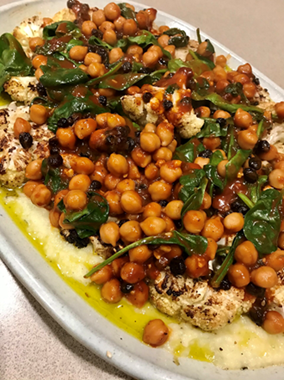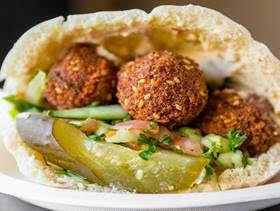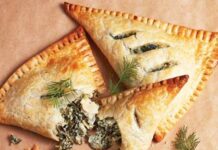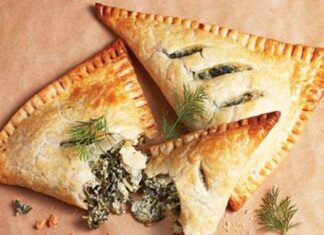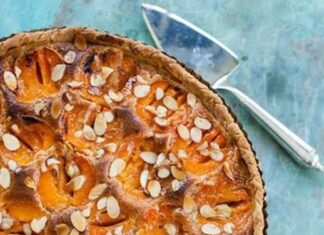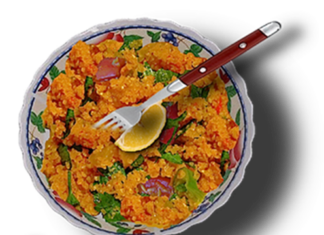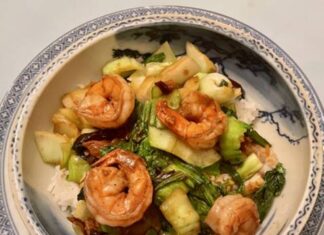CANBERRA, Australia — Woolworth’s supermarkets publishes a free recipe magazine each month, and I sometimes pick one up when I’m shopping. This Middle Eastern-inspired recipe with cauliflower and chickpeas really appealed to me, but when I began to make it I couldn’t believe how complicated the method was. Using the same ingredients, but a completely different method, I created this version,” says Linda Peek, English-born food blogger and entrepreneur. During her career as a “diplomat’s spouse” in the Australian Domestic Service, Linda traveled the world and entertained movie stars, rock stars, world leaders, dignitaries, and royalty.
“We were privileged to work on five continents with postings to Tel Aviv, Kuala Lumpur, Pretoria, Santiago, Paris and Copenhagen, and with home postings to Canberra in between,” says Linda. She now shares her stories, cooking tips, and international recipes like this Spicy Roast Cauliflower with Chickpeas and Spinach at her popular Canberra food blog. “This is a dish I enjoy making for family and friends. Chickpeas are an indispensable ingredient in kitchens and restaurants around the world, especially in North Africa, Spain, and India. Cauliflower, chickpeas, and spinach are three of my favorite go-to ingredients.”
Remains of chickpeas from the Middle East have been found that are roughly 7,500 years old. These remains were found in the aceramic levels of Jericho and Çayönü, Turkey, meaning that humans had been cultivating chickpeas since before they could produce pottery. In the Middle East, South Asia, Africa, and the Mediterranean, chickpeas have been a common cooking ingredient for thousands of years.
Also known as ceci beans, Indian peas, bengal grams, chana, kadale kaalu, sanaga pappu, and shimbra, over 12.1 million tons of chickpeas were produced in 2016. There are several varieties of chickpea, and many uses for them. Hummus is perhaps the most common, although they are also used in salads, soups, stews, entrees, desserts, and even pizza. “The reason chickpea is grown and consumed so heavily in those areas is because of its nutritional value,” says Douglas Cook, the head of the chickpea lab at the University of California at Davis. “It’s an import species, and we’re a bit late to the party.”
“Chickpeas are gluten-free. They can be processed into flour, or you can buy a bag of garbanzo bean flour that you can use to make batters, replace eggs and use anywhere you use other flours,” says Linda. “They make a tasty snack food like leblebi, and a healthy meat substitute in many vegetarian and vegan dishes.” (Leblebi is a snack made from roasted chickpeas, popular in Iran, Syria, Lebanon, Iraq, Greece and Turkey, and seasoned with salt, hot spices, dried cloves, or candy coated.)
Traditional Middle Eastern Falafel



